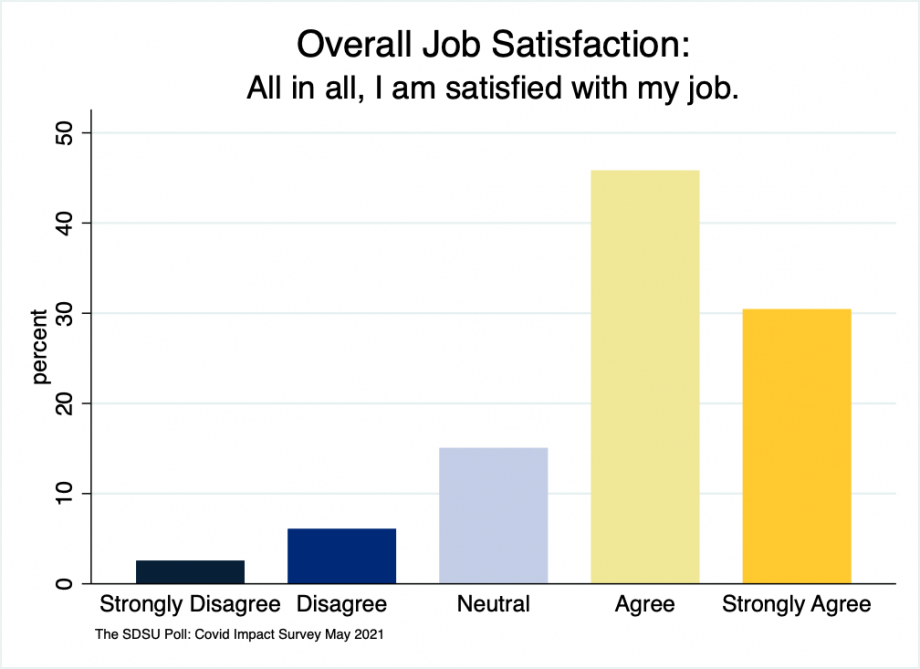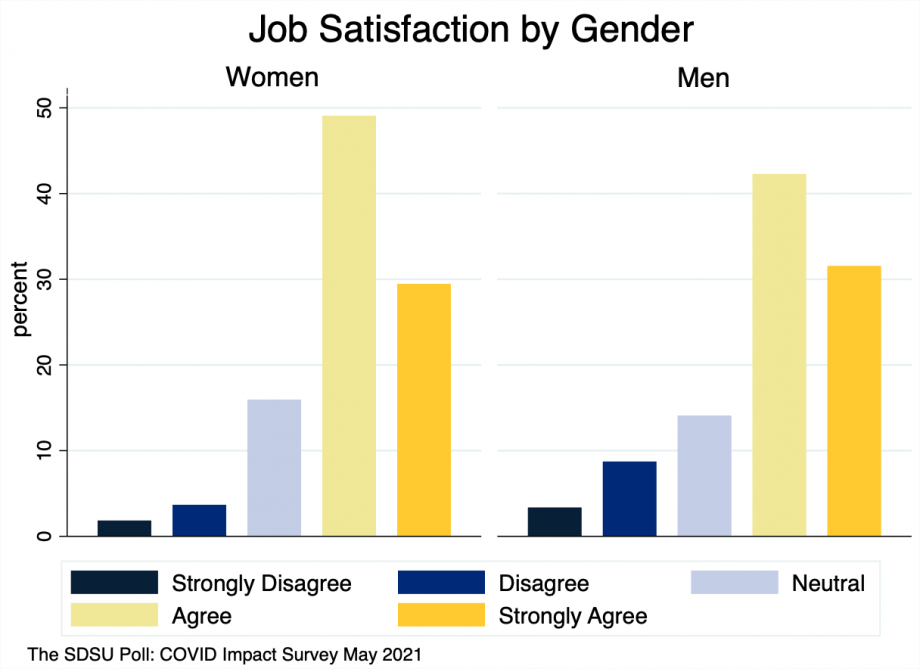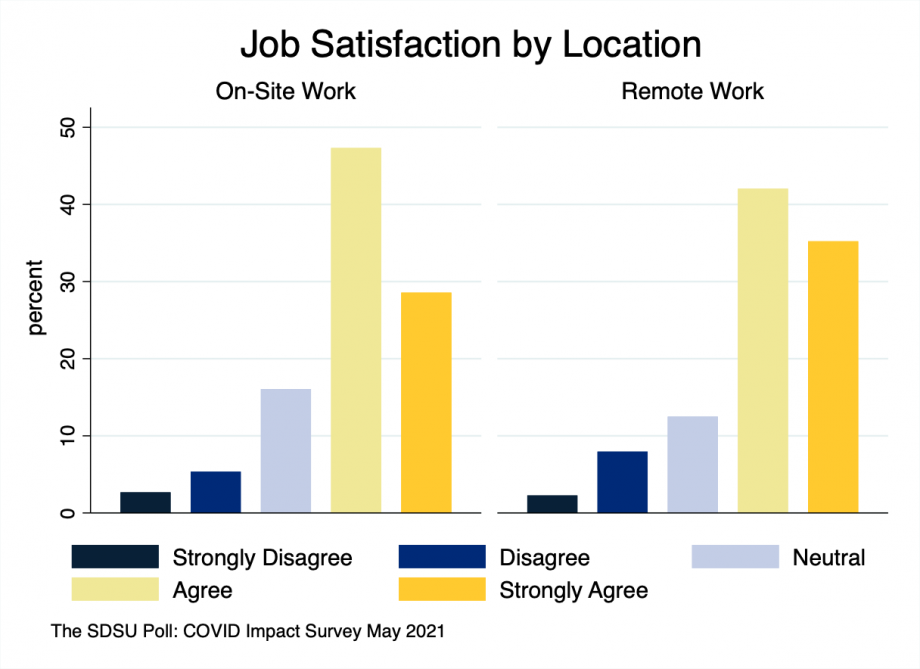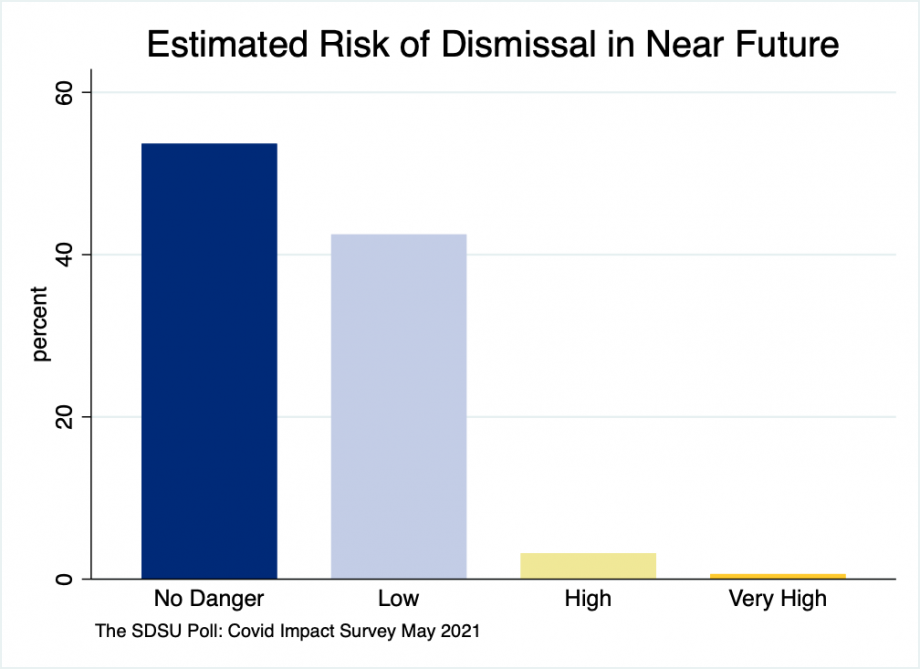The South Dakota COVID-19 Impact Survey May 2021 was conducted from May 14 to 23, 2021 by The South Dakota Polling Project, a research group housed in the School of American and Global Studies at South Dakota State University. Participants from The South Dakota COVID Impact Survey were invited to share their thoughts on the impact of the COVID-19 pandemic on their work- attitudes and behaviors. A total of 324 fully-employed South Dakotans over the age of 55 responded to the invitation and completed the survey. The margin of error of this survey was +/- 4 %, on par with other state-wide polls.
An aging workforce is one of the most significant challenges facing organizations, governments and societies. The U.S. Bureau of Labor Statistics projects that by 2024 a quarter of the U.S. workforce will be over the age of 55. While the COVID-19 pandemic has brought about numerous uncertainties and stressors for employees of all age groups, it has hit older workers in uniquely devastating ways. Understanding how the pandemic affected work attitudes and performance of older South Dakotans is the first step to develop interventions to support this group of people.
Our survey first examined the satisfaction of older employees in South Dakota with their jobs. Overall, the findings show high job satisfaction. When asked if they are satisfied with their jobs, 30% answered that they “strongly agree” and 46% answered that they “agree,” 15% answered that they were “neutral” and only 6% chose the “disagree” and 3% “strongly disagree” options, respectively. The high levels of job satisfaction could be attributed to the ability of our respondents to maintain employment during the uncertain period of the COVID-19 pandemic.

We can observe some difference in job satisfaction between male and female employees 55 and older. Women on average report slightly higher satisfaction than men. In particular, 79% of women indicated that they either “strongly agree” or “agree” that they are satisfied with their job, compared to 74% men. Less than 6% women answered “disagree” or “strongly disagree” that they are satisfied with their job compared to over 12% men. This result is in line with recent research that found that men’s increased contributions at home during COVID-19 lockdown had a positive influence on women’s overall job satisfaction.

We also observed differences in work satisfaction between employees working at home and employees working on-site. In our survey, 72% respondents indicated that they spent most of their work time on-site during the past year, compared to 28% who indicated working from home. Just over 35% of older employees were working from home, compared to 28% of older employees working on-site responded that they “strongly agree” that they were satisfied with their job. The fact that working from home allows employees to save time otherwise spent commuting and lowers the possibility of exposure to COVID-19, might explain this greater job satisfaction.

Besides job satisfaction, we also investigated if older South Dakotans are concerned about losing their job. The results show that this is not a big concern. Of the older employees we surveyed, 54% reported “no danger at all” and 42% reported “quite low” risk of being dismissed. Less than 1% indicated a “very high” risk. The low risk of being dismissed from job might be linked to the low unemployment rate in South Dakota, which is well below the national average. Additionally, older employees are generally well-situated in their jobs and have in-demand experience, both of which could contribute to their high feelings of job security.

In our following press releases, we will continue to explore the impact of the COVID-19 pandemic on work attitudes and behaviors of older South Dakotans. In our next release, we will focus on burnout, and then in the final press release we examine how older South Dakotans manage relationships with family members.
Contributors: Alper Kayaalp PhD, Filip Viskupic Ph.D. & David Wiltse Ph.D.
- Contact:
- Telephone number: 605-688-6795
Republishing
You may republish SDSU News Center articles for free, online or in print. Questions? Contact us at sdsu.news@sdstate.edu or 605-688-6161.

